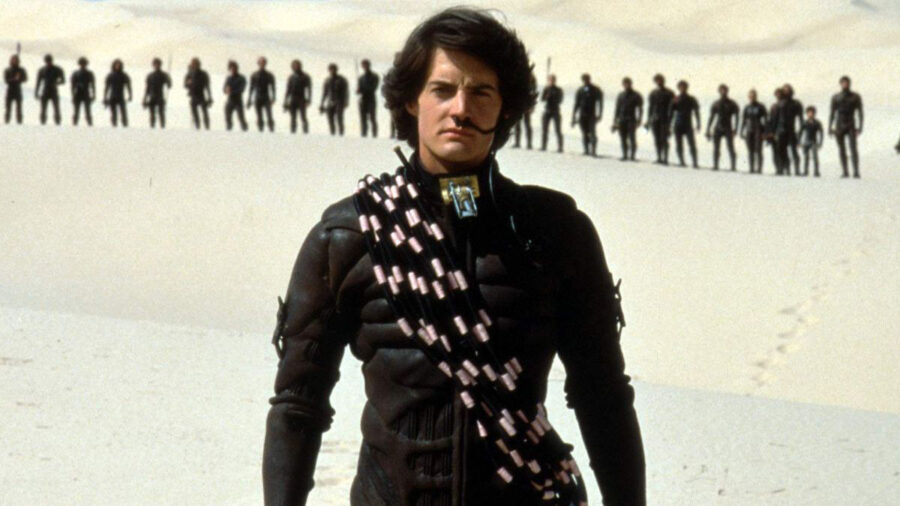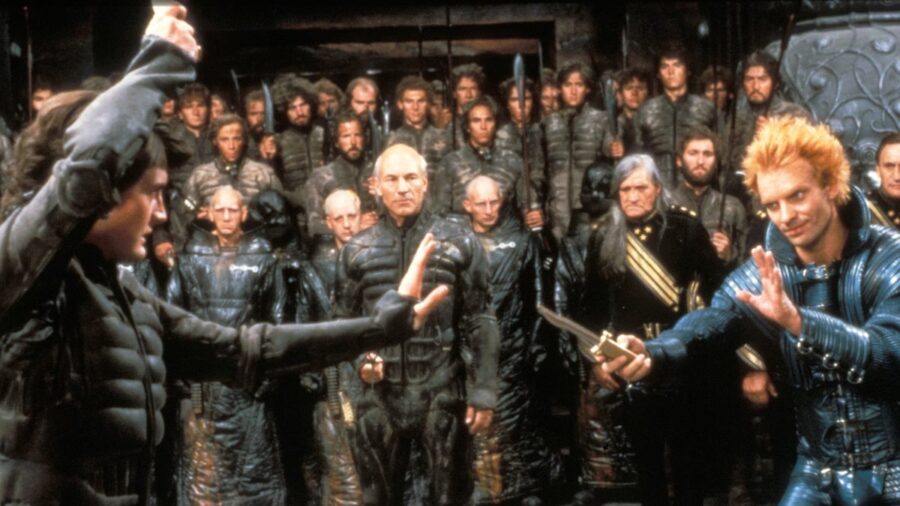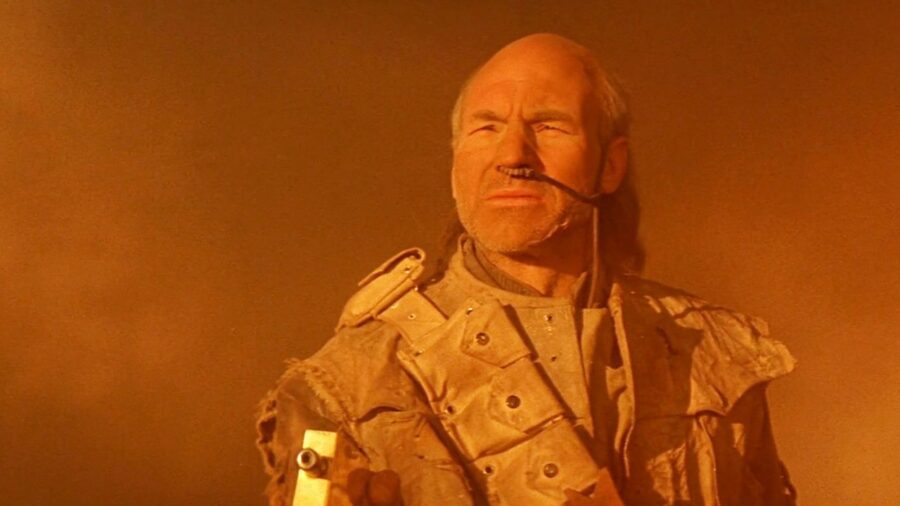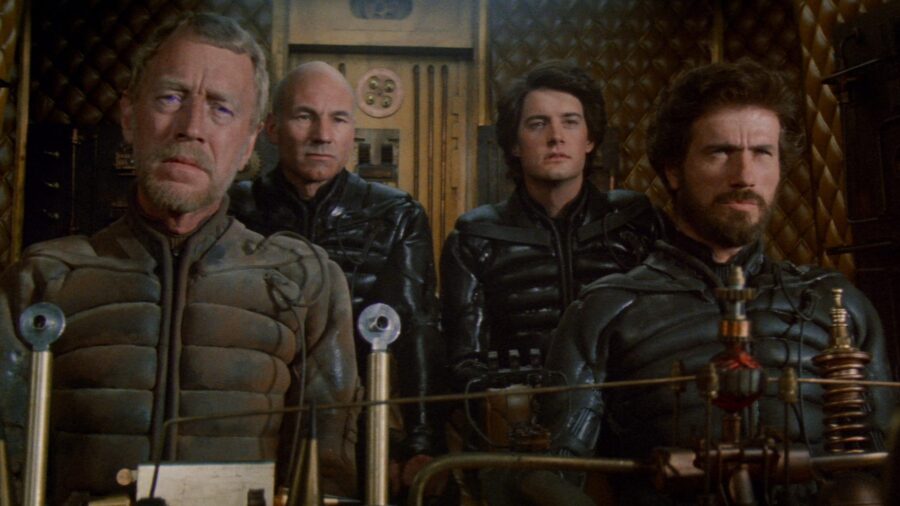The Mega-Budget Sci-Fi Flop On Netflix That’s Finally Getting Some Love

Once upon a time, surrealist filmmaker David Lynch was given a ton of money and told to adapt Frank Herbert’s sci-fi classic Dune into the next Star Wars. The result was a weird, at times grotesque, experiment that also kind of rocks. Lynch’s 1984 interpretation of Dune is available to stream now on Netflix and is definitely worth checking out for Lynch fans and those who just enjoy a trainwreck.
The David Lynch directed Dune is streaming on Netflix.
Like most things that have a reputation for being the biggest failure ever, Dune isn’t really all that bad. It’s messy, sure but it’s a beautiful mess featuring over 80 hand-built sets from the golden age of practical effects. Dune is a beautiful-looking anomaly with a troubled production that’s finally getting some love, thanks to Netflix.
The plot of the 1965 novel Dune is too complicated to really get into here, but basically, it’s about different intergalactic houses fighting over a substance known as “spice” that’s produced by giant, 1000-foot worms. Spice is the most valuable commodity in the universe, and it’s only found on a single desert planet known as Arrakis or “Dune.”
The indigenous Fremen people are exploited by those looking to mine the spice, and the son of a nobleman, Paul Atreides, becomes their messiah and helps them fight back against the empire.
Prior to the production of Return of the Jedi in 1982, George Lucas, a huge fan of 1977’s Eraserhead, asked David Lynch to helm the third installment of his original Star Wars trilogy. Lynch declined in favor of adapting Dune…
For those of you who have never seen Dune and decided to give it a shot on Netflix, a lot of what you see is going to seem similar to Star Wars, and there’s a good reason for that: George Lucas stole a lot from Dune. Obviously, Star Wars has many other influences as well—Flash Gordon, The Hidden Fortress, etc.—but the desert setting of the original film, as well as the concept of spice as a commodity, are ripped directly from Frank Herbert.

Even the Jedi—Lucas’s most famous creation—feel oddly similar to the Bene Gesserit, a religious order of women with physical and mental abilities far beyond that of regular humans. With all the similarities and given that it was the ’80s, it’s a wonder David Lynch didn’t just make a Star Wars movie. Well, he was asked…
Prior to the production of Return of the Jedi in 1982, George Lucas — a huge fan of 1977’s Eraserhead — asked David Lynch to helm the third installment of his original Star Wars trilogy. Lynch declined in favor of adapting Dune for the big screen, something various people in Hollywood had been trying to do since the early ’70s.
When producer Dino De Laurentiis first contacted Lynch about directing Dune, the experimental filmmaker had never even heard of the original novel. Upon reading it, he became infatuated with the story and agreed to direct.
David Lynch was actually De Laurentiis’s second choice to direct Dune. Originally the film was set to be helmed by Alien director Ridley Scott who worked on the project for seven months before abruptly quitting.
As Scott tells it, he realized that the production was going to take at least a couple of years from start to finish and didn’t have the energy for such a long production following his older brother’s sudden death.
Scott wasn’t wrong. The movie’s production, from script to screen, lasted from 1981 until 1984, when Dune was finally released. Lynch took over six months to complete the first script with writers Eric Bergren and Christopher De Vore.
Five more drafts were written after the other writers left the project. Lynch originally wrote Dune as two movies—a complete afternoon killer, had that version of the movie reached Netflix—but was eventually forced to edit the script down to one movie.
Meanwhile, Lynch rounded up an eclectic cast of actors. Kyle MacLachlan, most famous for another Lynch production, Twin Peaks, starred as the main protagonist Paul Atreides.
MacLachlan was joined by Virginia Madsen as Princess Irulan as well as future Star Trek captain Patrick Stewart as Gurney Halleck and rock star Sting as Feyd Rautha. Famous character actors like Chucky‘s Brad Dourif, NCIS: Los Angeles star Linda Hunt, and Krull‘s Freddie Jones rounded out the cast.

Dune was filmed entirely in Mexico for a budget of over $40 million. To put that into perspective, Return of the Jedi, released the year before Dune, and at that time the most expensive Star Wars film, had a budget of only $32 million.
The movie required 20,000 extras and took six months to film. When it was finally finished, the rough cut ran over four hours long and had to be cut to half that length. As a result, many scenes had to be cut or simplified, which only served to further complicate an already dense story.
The plot was considered too confusing and an exposition-heavy voice over by Virginia Madsen’s Princess Irulan was tacked on to the beginning to make the movie easier to understand. Despite Lynch and the studio’s best efforts, the movie tanked.
Dune grossed around $31 million during its initial theatrical run, not even earning back its budget of over $40 million. People might be able to appreciate Dune in 2023 watching it on Netflix from their couch, but in 1984 theatergoers weren’t buying it.
Star Wars For Adults
Dune‘s critical reception was even worse. Noted critic Roger Ebert gave the movie one star and called it “the worst movie of the year.” The movie tried to follow the Star Wars formula when it came to merchandising, spawning action figures, board games, and even a Marvel comic book adaptation.

Sadly, when you make what Virginia Madsen called “Star Wars for adults,” you alienate kids, the ones buying—or not buying, in Dune‘s case—all of the toys.
David Lynch has stated that Dune is his least favorite film and has declined several offers to work on a director’s cut of the film, saying that it would be too painful to revise what he considers his biggest failure. Fan opinions of the film have softened in the almost 40 years since its release.
While many still prefer 2021’s Dune or the made-for-television version that aired on SyFy in 2000, there are still a lot of fans who consider David Lynch’s Dune a respectable effort to adapt a very dense and almost unfilmable source novel.
If you’re curious or if you already love the movie but haven’t seen it in a while, Dune is currently streaming on Netflix.












